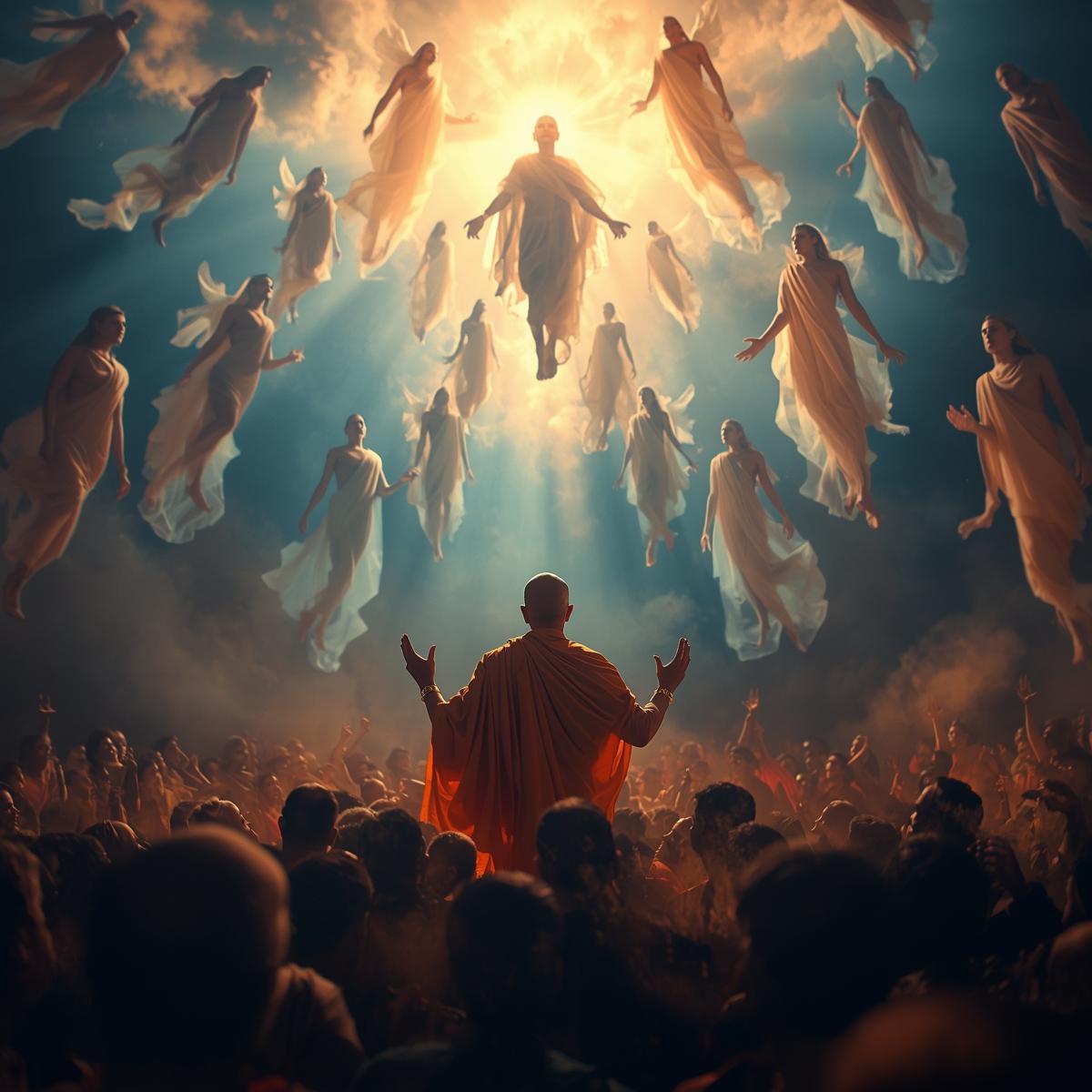About Us
- Home /
- About Us
Divine Life Story
The extraordinary journey of the 22nd tirthankara from royal prince to enlightened master
Born in Sauripura (near present-day Dwaraka, Gujarat) as the son of King Samudravijaya and Queen Shivadevi.Cousin of Lord Krishna and Balarama (Yadu dynasty).His emblem is the Conch (Shankha), and his color is black.
At around 30 years of age, during his wedding procession, he heard the cries of animals kept for sacrifice.
Deeply moved, he renounced royal life and chose the ascetic path.
He practiced deep meditation, compassion, and austerities, with emphasis on ahimsa (non-violence).
Just 54 days after renunciation, he attained Kevala Jnana — absolute knowledge.
After this, celestial beings created a Samavasarana (divine preaching assembly) where he delivered sermons.
After a long life of 1,000 years, he attained moksha on Girnar Mountain in Gujarat.
He became a Siddha, a liberated soul free from birth and death.
Sacred Symbolism
represents different aspects of his divine nature.

Bull Emblem
Represents strength, righteousness, and the dharmic foundation upon which spiritual progress is built.

Golden Color
Symbolizes divine wisdom, purity, and the radiant light of knowledge that dispels ignorance.

Banyan Tree
Represents eternal life, shelter for all beings, and the vast reach of spiritual teachings.

Yaksha & Yakshini
Divine attendants Gomukh Yaksha and Chakreshvari Yakshini, protectors of devotees and dharma.
Historical References
Ancient scriptures and archaeological evidence that validate the historical existence of Bhagwan Maharvir ji
📜 Ancient Scriptures
Kalpa Sūtra
Records the lives of Tirthankaras, including Neminath’s birth, renunciation, and liberation.
Uttarādhyayana Sūtra
Contains teachings and references to the compassion and renunciation of Neminath.
Avashyaka Niryukti
Mentions vows and rituals that highlight Neminath’s emphasis on non-violence.
🏛 Archaeological Evidence
Girnar Mountain (Gujarat)
The sacred site where Neminath attained moksha, historically revered with inscriptions and pilgrim
Junagadh Inscriptions
Ancient inscriptions near Girnar referencing devotion to Neminath.
Ancient Caves & Idols
Depictions of Neminath with the conch emblem found in Gujarat and surrounding regions.
Legends & Spiritual Significance
Ancient scriptures and archaeological evidence that validate the historical existence of Bhagwan Maharvir ji

The First Teaching
Legend tells that when Bhagwan Anantnath first began teaching after attaining Kevala Gyan, even the gods descended from heaven to listen. His first sermon established the fundamental principles of ahimsa (non-violence), satya (truth), and dharma that would guide humanity for countless generations. "His words carried the power to awaken the soul and illuminate the path to liberation."

Divine Compassion
Legend tells that when Bhagwan Anantnath first began teaching after attaining Kevala Gyan, even the gods descended from heaven to listen. His first sermon established the fundamental principles of ahimsa (non-violence), satya (truth), and dharma that would guide humanity for countless generations. "His words carried the power to awaken the soul and illuminate the path to liberation."

Eternal Guidance
Even after attaining nirvana, the spiritual presence of Bhagwan Anantnath continues to guide devotees. Many believe that sincere meditation upon his teachings and qualities can invoke his divine blessings, helping souls overcome obstacles on their spiritual journey. "Though beyond physical form, his eternal wisdom continues to illuminate countless hearts."
